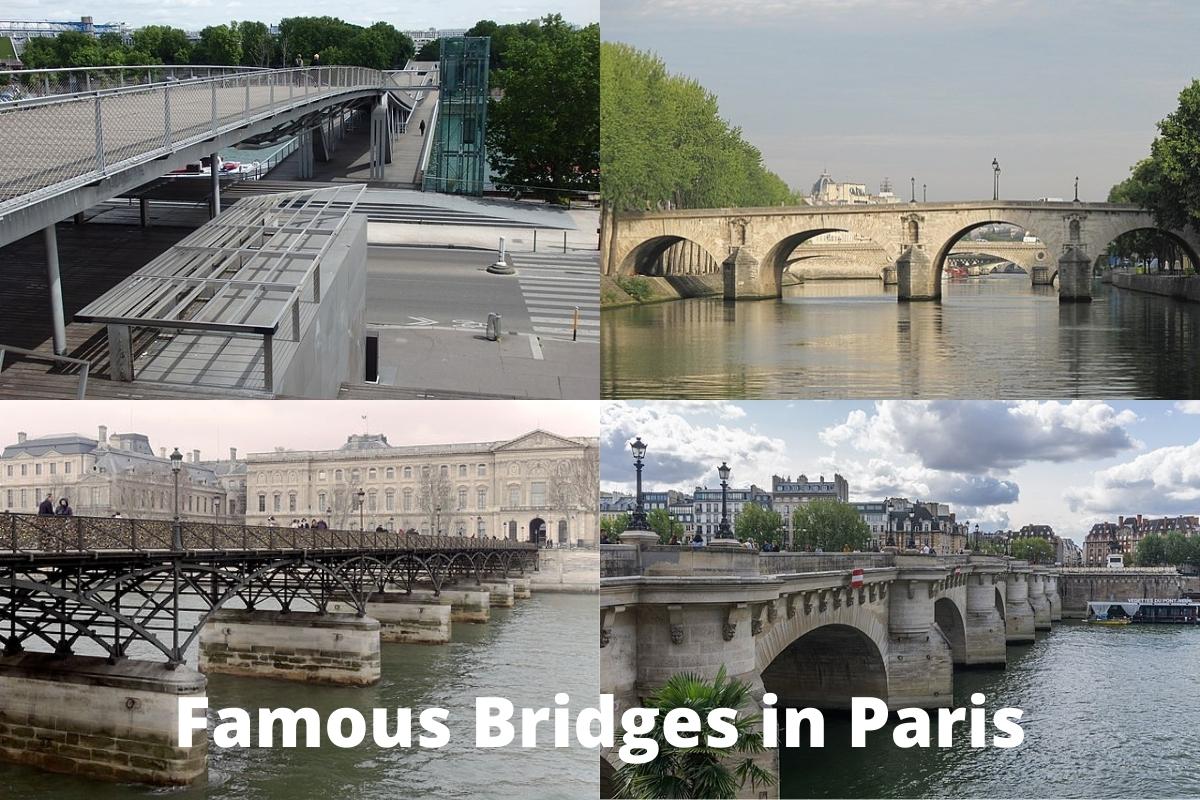We know the city of Paris for its historical architecture, which includes some of the oldest and most storied bridges crossing the Seine River. The city of Paris is full of rich history and is often called the “capital of the world”.
Famous bridges in Paris are in the center of the historic capital city of France. 16th century and recently constructed bridges cross the Seine River and offer spectacular views. They also provide easy access to popular local attractions like The Eiffel Tower, The Pantheon, and the world-famous Louvre Museum.
Read on to learn more about some of the most famous bridges in Paris. Find out about their use and their history and learn some stories behind their construction.
Famous Bridges in Paris
1. Pont Alexandre III
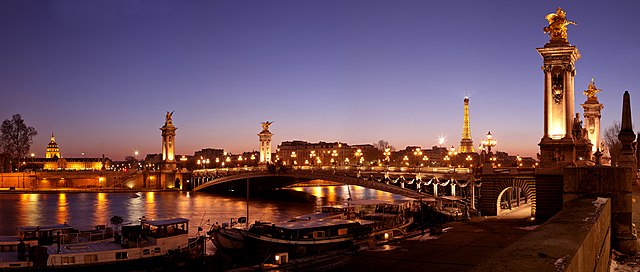
The Pont Alexander III Bridge crosses the Seine River in Paris. It has a total length that spans 160 meters, equal to about 520 feet. This historical Parisian bridge is 40 meters wide, which is about 130 feet.
This deck arch bridge features prominent sculptures of four horses with winds said to represent Parisian art, science, commerce, and business industry.
Visitors to the famous deck arch bridge have a bird’s-eye view of other famous landmarks in Paris scattered along the banks of the Seine River.
The Eiffel Tower, Louvre Museum, and the Pantheon are all easily accessible from various entry points along the Seine. Parisians and visitors enjoy touring the popular bridge at all hours of the day and night.
2. Pont Neuf
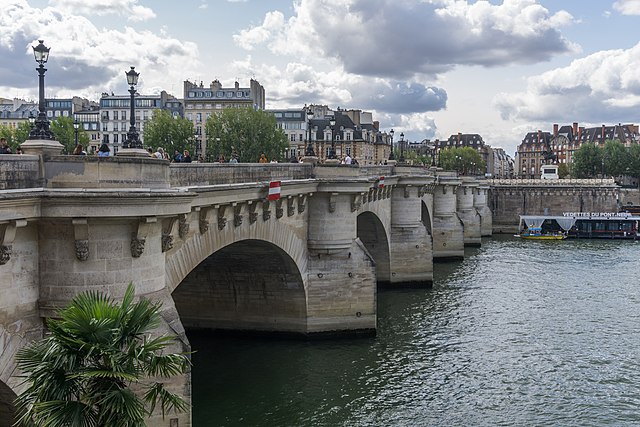
The Pont Neuf is the oldest standing bridge in Paris. Like many of its counterparts, it crosses the River Seine. The bridge finished construction in the early part of the 16th century, around 1607.
They made this arched bridge of stone, which has a length of 232 meters. The bridge is located at a point that was the heart of the original city of Lutetia, which was later renamed “Paris.”
The French Ministry of Culture, responsible for naming and protecting French national monuments and cultural identity, lists Pont Neuf as a historical monument.
3. Pont des Arts
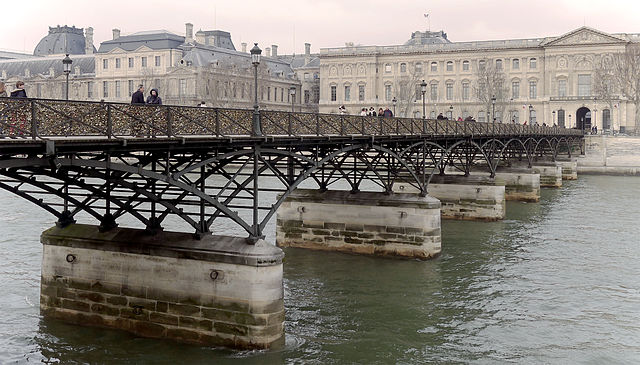
They completed construction on the Pont des Arts Bridge as a pedestrian bridge across the Seine river in Paris. The French Ministry of Culture added the Pont des Arts Bridge to its national historical monument list in March 1975.
Also Read: Famous Bridges
The original version of the Pont des Arts Bridge was closed to the public in 1977 because of extensive damage to the structure caused by “aerial bombardments” from World Wars I and II. Pont des Art also sustained extensive damage from boat and barge collisions on the Seine River.
Parisian architects classify this bridge as a footbridge or “arch bridge” constructed by the architect Louis Arretche.
The Pont des Arts is a Parisian tourist attraction that is free for residents and tourists to visit. This Parisian bridge connects local landmarks, including the Institute of France and the Palais du Louvre.
4. Pont de Bir-Hakeim
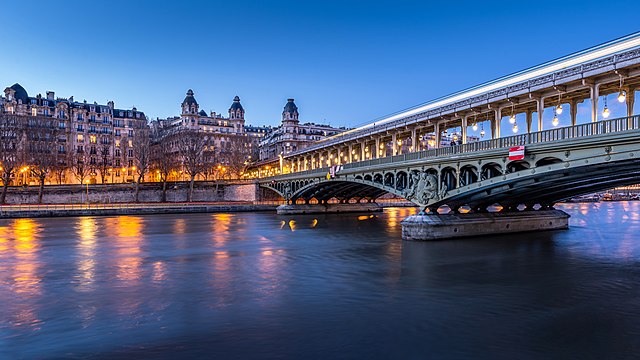
The Pont de Bir-Hakeim is a “viaduct” bridge that was once called the “Passy Viaduct” and is among the most famous bridges in Paris. We know the Pont de Bir-Hakeim for appearing in several popular movies.
Engineers constructed the Bridge of Bir-Hakeim of steel beginning in 1903. It was fully completed by 1905 when they started using it as a road bridge. The Pont de Bir-Hakeim Bridge is currently in service as a tram bridge in the Paris metropolitan area.
Like many of its local counterparts, the Bridge of Bir-Hakeim crosses the Seine River.
5. Pont de la Tournelle
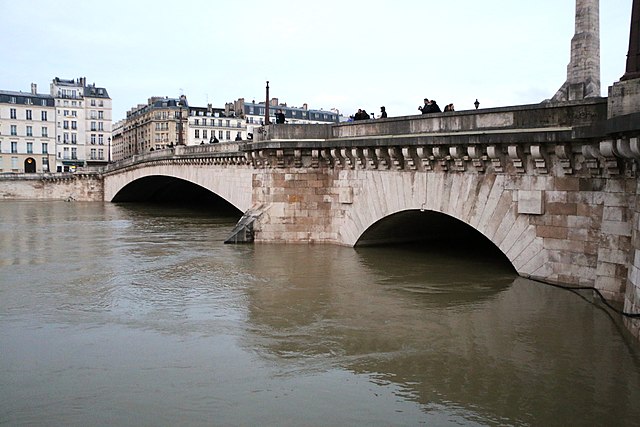
In English, we call the Pont de la Tournelle Bridge in Paris a shortened version of its name — the Tournelle Bridge. This famous Parisian arched bridge opened in the city’s heart in 1928 and has been an object of interest since then.
They made the Tournelle Bridge with a 7-meter clearance at its central arch of around 22 feet for ships and barges to pass. Pont de la Tournelle has a total length of 122 meters (about 422 feet) and a width of 23 meters or 75 feet.
Also Read: Bridges in France
Several other bridges and bridge-like structures stood in the place of the Tournelle Bridge before they constructed it in 1928.
A wooden and stone bridge, built in the early 16th century, was on the site before the current version of the bridge. They built the history-laden bridge we know as the Pont de la Tournelle today.
6. Pont Marie
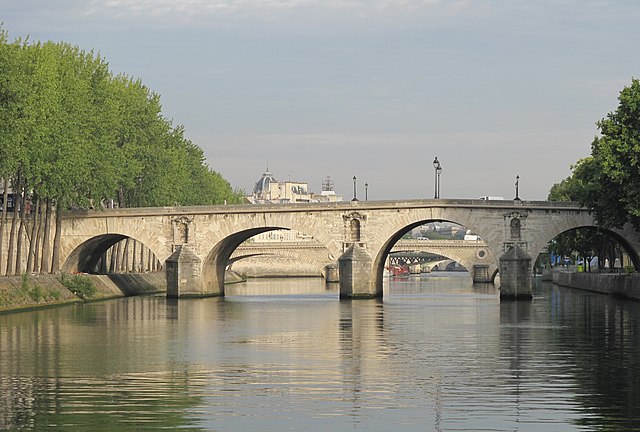
The Pont Marie is one of Paris’ most famous toll bridges in the city’s heart. It connects the Île Saint-Louis to the Quai de l’Hôtel de Ville, which allows pedestrian traffic, motor vehicles, and bicycle traffic to flow between the left and right banks of the romantic and historically cultural city.
They named the Pont Marie after its engineer, Christoper Marie, who we know for being an advocate for urbanizing the city of Paris in the 16th century.
It took them over 20 years to complete the construction of the Pont Marie because they initially could not get the approval of the king in 1605 when they proposed the concept of a new bridge.
Engineers didn’t get the approval to proceed with the project until nine years later when the king finally approved the Pont Marie construction and laid the first stone himself.
They finished The Pont Marie in 1635 and opened it for circulation. When they first built the bridge, they allowed houses to be built on it until the tragic deaths of several people living on the bridge happened in the mid-16th century.
Also Read: Famous Buildings in Paris
Parisian authorities responded by officially barring residential buildings from being constructed on the Pont Marie in 1769. Other Parsan bridges implemented the same residential building restrictions on bridges in 1788.
7. Passerelle Simone-de-Beauvoir
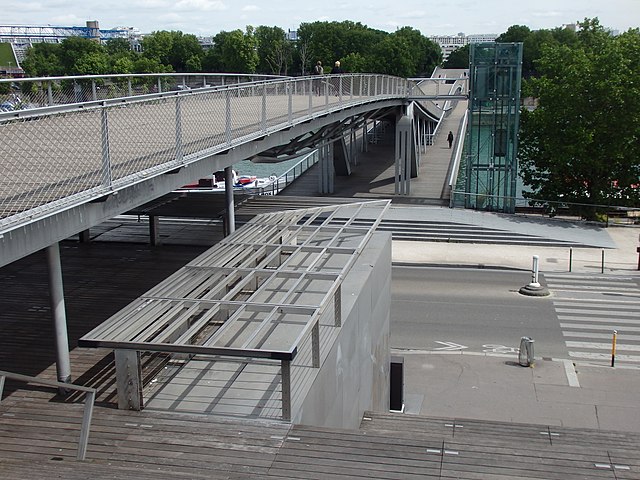
Passerelle Simone-de-Beauvoir was originally called the “Passerelle Bercy-Tolbiac. This pedestrian bridge has a total length of around three-hundred and four meters, which equals nine-hundred ninety-seven feet.
The Passerelle Simone-de-Beauvoir sits between a network of bridges and has a width of thirty-nine feet, which is around twelve meters.
They constructed the Passerelle de-Simone-Beauvoir of steel. It weighs over six hundred tons and had its spans constructed in sections that were delivered to its current location by barge.
The bridge took two years to construct and opened for traffic as a lens-shaped structure with rotational supports designed to reduce the effects of wind shear on pedestrians crossing this Parisian footbridge.
Passerelle Simone-de-Beauvoir has five crossings without supports, a pedestrian rain shelter, and rotational anchoring on its supports.
8. Pont de l’Alma
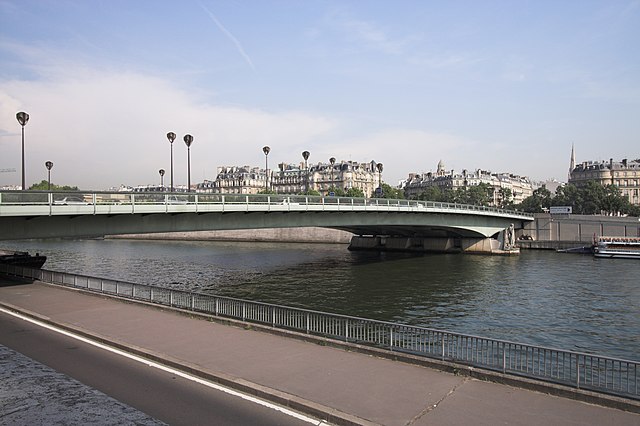
The Pont de l’Alma Bridge is a girder bridge named for the Ottoman-Franco-British victory in the Crimean war that concluded in the fall of 1854.
Pont de l’Alma has a total length of five hundred and two feet or one-hundred fifty-three meters. It’s one-hundred thirty-eight feet wide, which equals forty-two meters.
The Ponte de l’Alma was designed by Paul-Martin Gallocher de-Lagalisserie. They constructed this bridge in the mid-18th century between 1854-1856. Napoleon III inaugurated it in April 1856.
When the bridge opened, it had multiple functions. Parisian engineers used it for measuring local water levels. They also still use it to keep track of flood stages along the Seine River.
Each end of the bridge has two military-like statues that mark the water line and flood stages. They’ve used this system of measuring flood waters since 1868.
We know The Ponte de l’Alma for its proximity to the death of Diana, Princess of Wales, that happened near the bridge in 1997. They reconstructed the Ponte de l’Alma between 1970 and 1974 to accommodate the increasing traffic on the bridge.
9. Pont d’Iéna
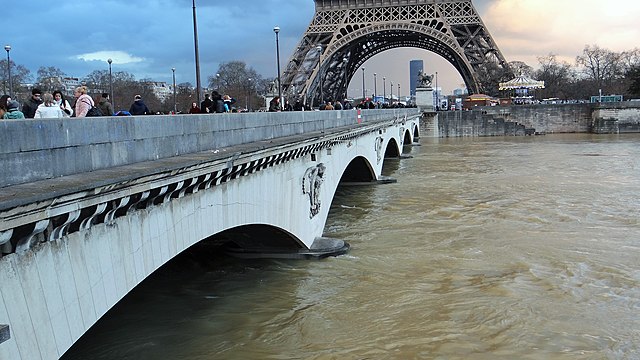
The Pont d’Iena Bridge, previously named, overlooks the Military School in France named by Napoleon I.
This bridge connects the Eiffel Tower to the Trocadero district on the Right Bank of Paris. It took Parisian engineers six years to complete the construction of this world-famous bridge.
Each successive ruler made minor cosmetic changes by replacing adornments on the bridge to reflect their tastes. Pont d’Ilena had adornments that depicted imperial eagles from the early to the mid-18th century. The preceding empire removed the imperial eagles and changed them to reflect the royal letter “L” in 1852.
The bridge underwent several more minor cosmetic changes until the mid-19th century when engineers implemented upgrades to accommodate the growing traffic. They completed the expansion project in 1937.
We know the Ponte d’Ilena Bridge for its five famous arches and four intermediate piers.
10. Passerelle Léopold-Sédar-Senghor
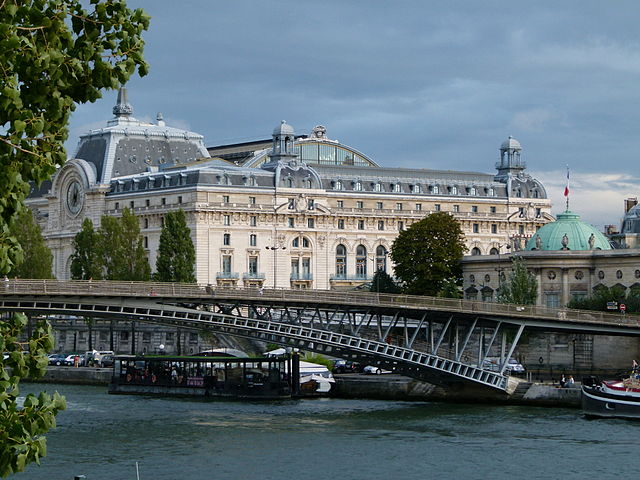
The Passerelle Leopold-Sedar-Senghor is named for the French victory at the Battle of Solferino.
It is on the Seine River in France between the Pont Royal upstream and the Pont de la Concorde downstream. They officially opened this pedestrian footbridge to the public in 1999 after a two-year construction period starting in 1997.
Like most of Paris’ famous bridges, the Passerelle Leopold-Sedar-Senghor crosses the Seine River. This bridge had many previous versions. At one time, it was a cast iron bridge designed for motor vehicle crossings that Napoleon III inaugurated.

